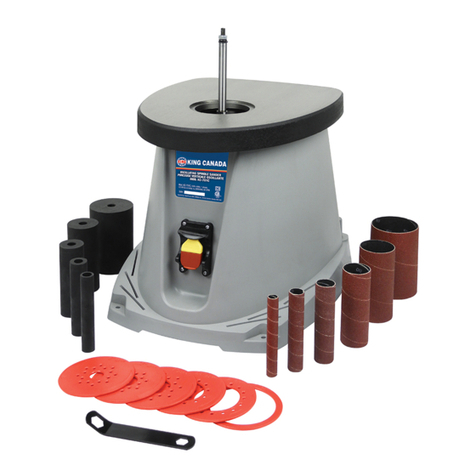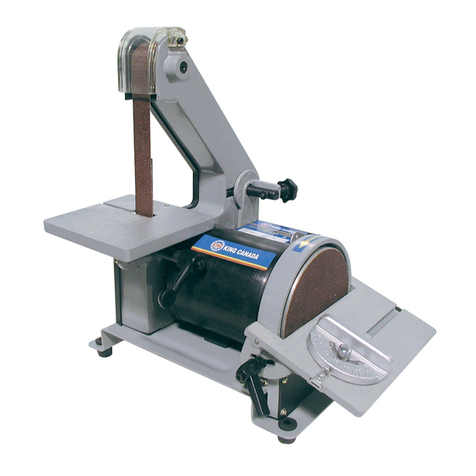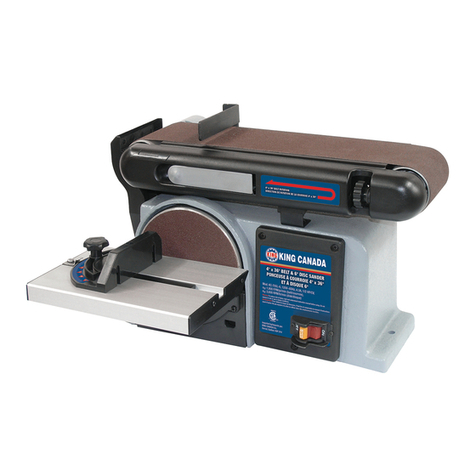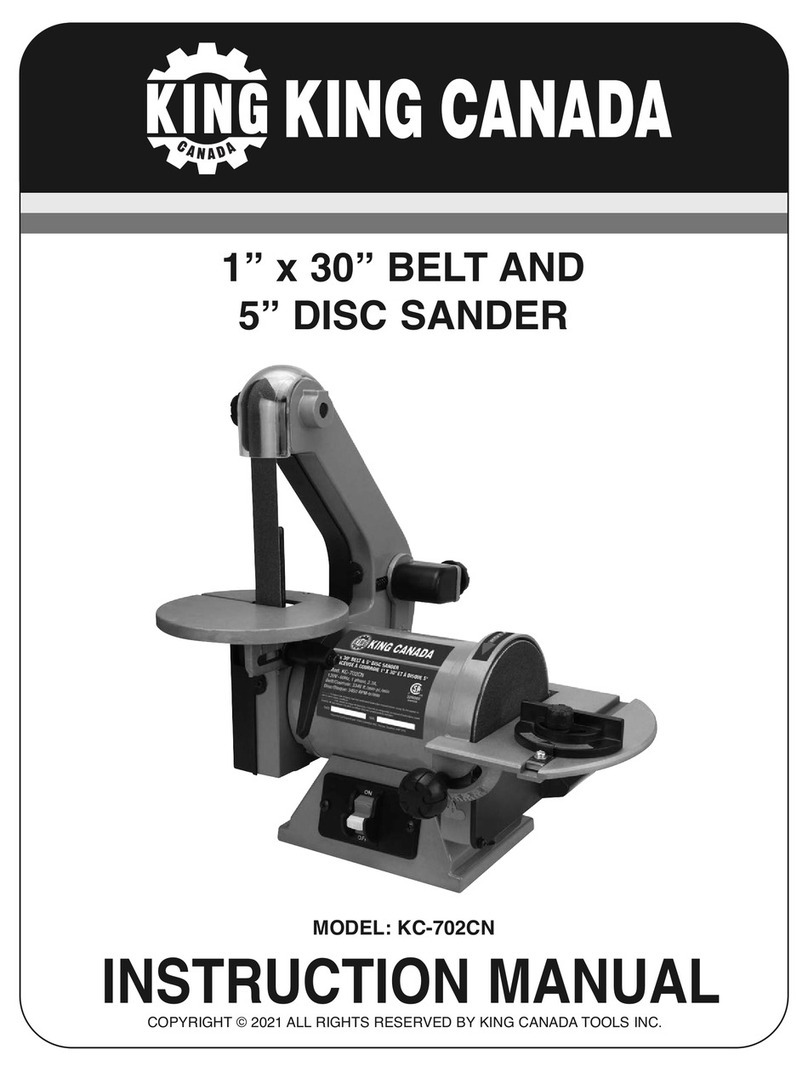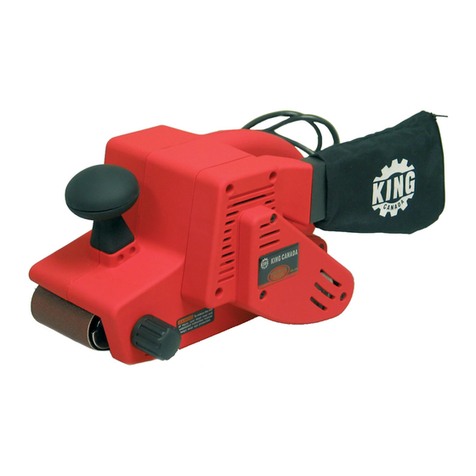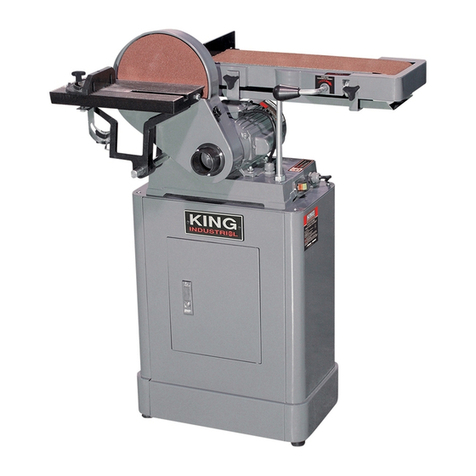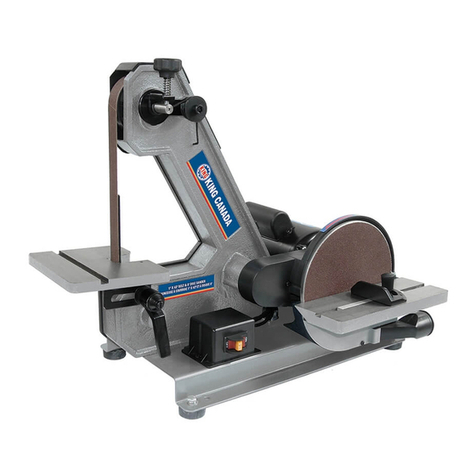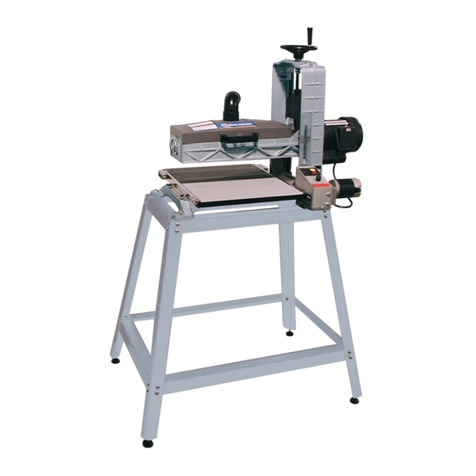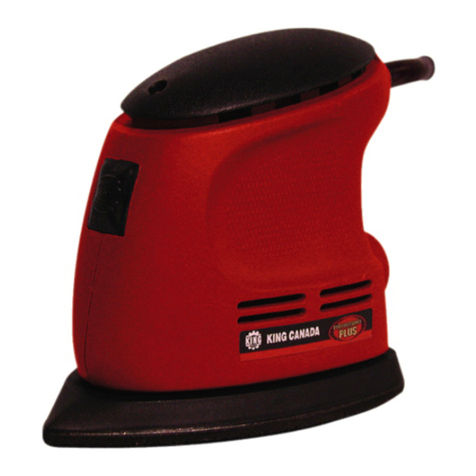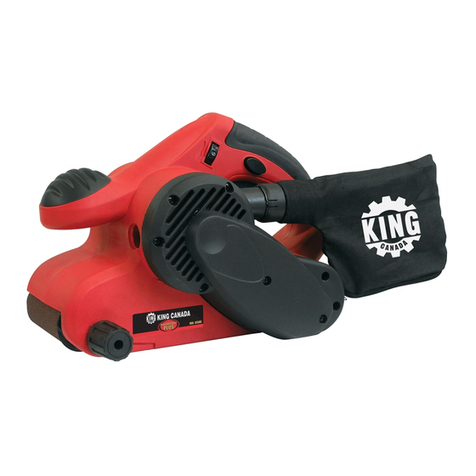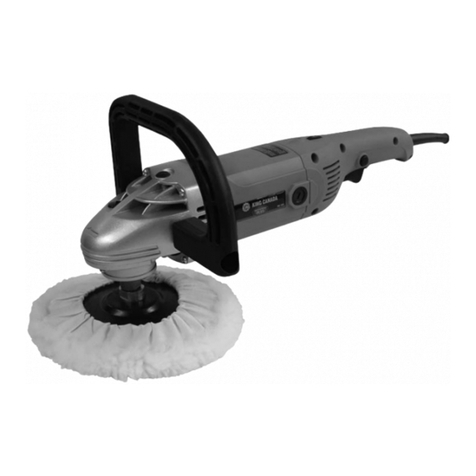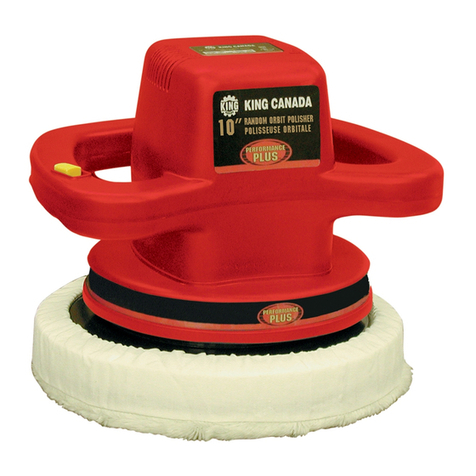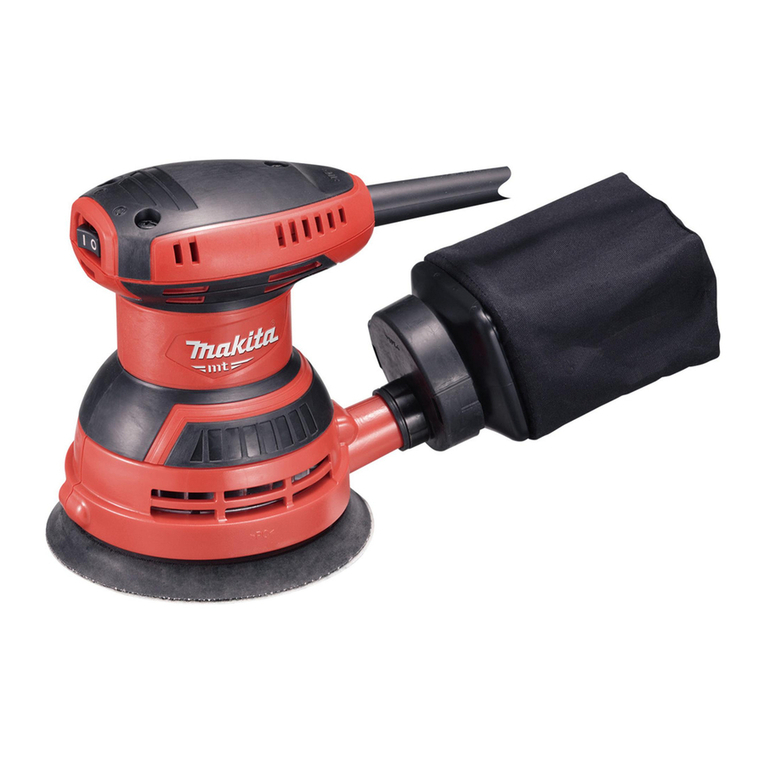OPERATION
Installing Sandpaper
Your sander is designed to use 1/4 sheets of sandpaper. This size can be made by
cutting a full sized (9" x 11") sandpaper into 1/4 sheets of 4-1/2" x 5-1/2".
Install sandpaper to your palm sander as follows;
1) Soften the stiff edges of the sandpaper to be clamped (4-1/2” edge) by pulling it over
the 90° edge of a table or other straight edge.
2) Release front clamp lever by pushing it in against the body, lifting it up slightly, then
pulling it out slightly and finally lowering it to disengage it from the tab on the base
plate.
3) Fully insert the 4-1/2" edge of the sandpaper under the clamp and secure it by
hooking the clamp lever into the lock position behind the tab on the base plate.
4) Stretch sandpaper over the sanding pad and insert under the opposite clamp in the
same way.
Note: Touse the dust extraction feature, perforate the sandpaper with the provided punch
plate as described in the punch plate instructions in the next section.
Punch Plate
Asandpaper punch plate is provided with your palm sander to let you perforate regular
sandpaper to make dust collection possible. To perforate your sandpaper, install the
sandpaper as described above in section “Installing Sandpaper”. With the sander turned
off and unplugged, place the punch plate on the sandpaper so that the tabs at the edges
of the punch are against any two adjacent sides of the sanding pad. Press the punch
plate against the pad so that the 8 points penetrate the sandpaper. (Press the
punch into the pad as far as it will go). Remove the punch plate and the sandpaper is
ready.
An alternate method of perforating the sandpaper is to fasten the punch plate down to a
suitable work surface and press the palm sander (with the sandpaper attached) down on
the punch plate. Two holes are provided in the punch plate for this purpose.
Turning Palm Sander ON/OFF
Toturn the palm sander on, depress the side of the front mounted dust-proof switch that
corresponds to the symbol “I”. Toturn the tool off, depress the side of the switch that
corresponds to the symbol “O”.
Installing Dust Bag
DUST BAG WARNING!: NEVER OPERATE THIS PALM SANDER WITH
PERFORATED SANDPAPER UNLESS THE DUST BAG IS INSTALLED.
Touse the dust collecting system, the eight dust extraction holes must be punched
through the sandpaper. Simply insert the dust bag as far as it will go into the rear
vacuum port. To empty the dust bag, simply pull it out of the vacuum port, undo the dust
bag from the dust bag frame and empty over a trash receptacle. Keep dust bag clean at
all times for best dust collection results. It is possible to attach a dust collector or
vacuum with a 1-3/16” ID hose, or if not available, the supplied dust bag should be used.
Using the palm sander
To operate your sander, grasp it and check to make sure the sandpaper is not
obstructed or touching the work surface, then turn it on. Move it in long, sweeping
strokes along the surface being sanded, letting the palm sander do the work. Pushing
down on the tool while sanding actually slows the removal rate and produces an
inferior quality surface.
Check your work often, this palm sander is capable of removing material rapidly,
especially with coarse paper. To produce the best finish possible, start with coarse grit
sandpaper and change gradually to finer and finer sandpaper. When sanding painted
surfaces, you may find that the sandpaper loads up and clogs with paint. A heat gun will
work much better to remove paint before sanding.
Sanding Paint
Sanding of lead based paint is NOT RECOMMENDED due to the difficulty of controlling
the contaminated dust. The greatest danger of lead poisoning is to children and
pregnant women.
NOTE: Only dust masks suitable for working with lead paint dust and fumes should be
used. Ordinary painting masks do not offer this protection. Consult your local hardware
dealer.
Warning! NO EATING, DRINKING or SMOKING should be done in the work area to
prevent ingesting contaminated paint particles. Workers should wash and clean up
BEFORE eating, drinking or smoking.
Maintenance
Keep your machine as clean as possible by wiping with a clean cloth and blowing
through it with air after every 5 hours of use. Don’t use harsh chemicals or solvents to
clean the tool. These chemicals could seriously damage the plastic.
Keep the vents clear of dust and debris. This will help prevent possible electrical shorts
and ensure proper cooling. Keep the tool housing clean and free or oil and grease using
mild soap and a damp (not wet) cloth. Inspect the cord regularly and have it replaced by
an authorized service center if it is damaged.
Lubrication for this tool is done at the factory and should not be necessary again under
normal use.
Cleaning
Use mild soap and a damp cloth to clean the palm sander. Do not use petrol, turpentine,
lacquer, paint thinners or any other substance that could damage the plastic housing. Do
not let liquid get inside the palm sander. Never immerse the palm sander in liquid.
OPERATION & MAINTENANCE

